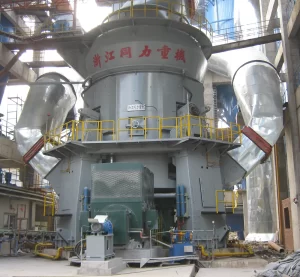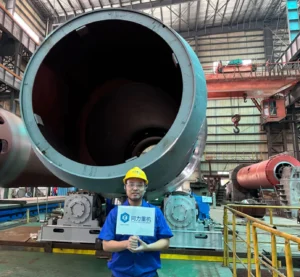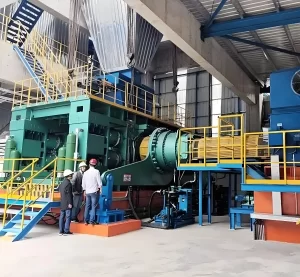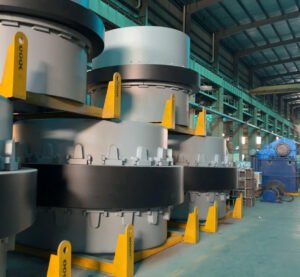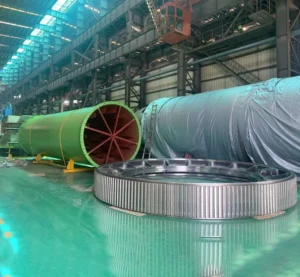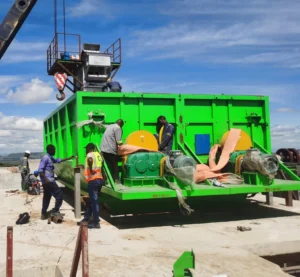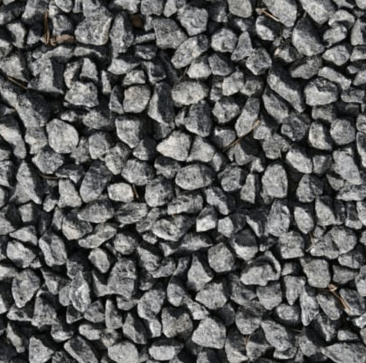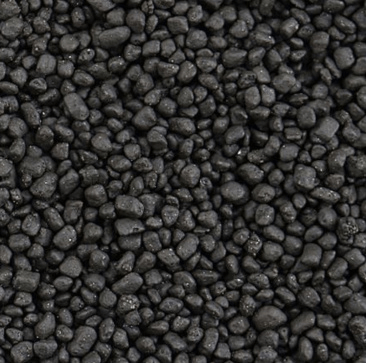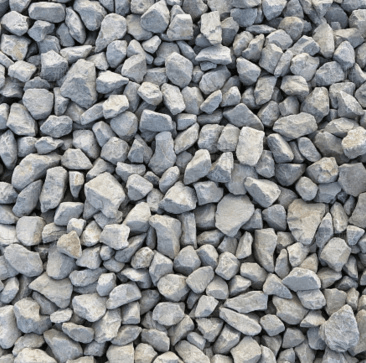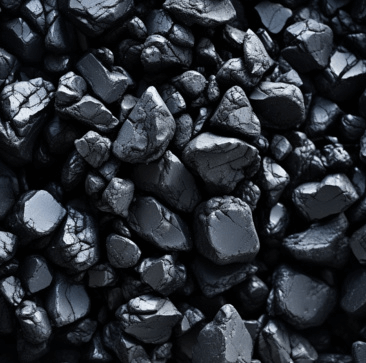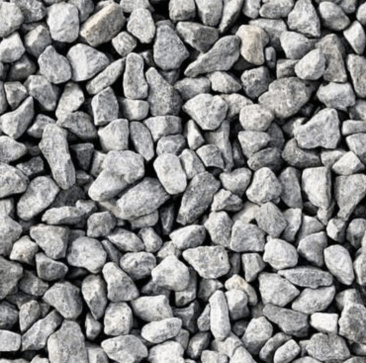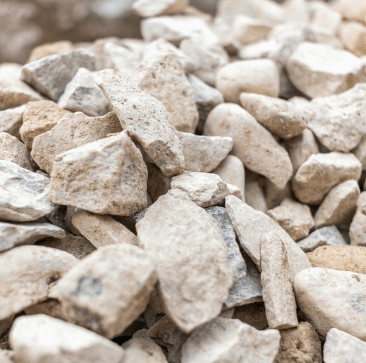-
1. What is the working principle of a rotary kiln?
1. The working principle of a rotary kiln mainly involves three stages: heating, reaction conversion, and cooling. During the heating and sintering process, the inside of the rotary kiln is mixed with air through fuel combustion to form a high-temperature environment temperature of 900°C to 1450°C, and moisture and volatile substances are evaporated and discharged to gradually sinter and solidify.
2. During the reaction and conversion stage, the chemical components in the material react chemically at high temperatures. Finally, in the cooling stage, the material after calcination gradually drops from high temperature to below 100°C, and the cooled product can be subsequently processed and applied.
3. The design of a rotary kiln usually adopts an inclined design with one end high and one end low. This design allows the material to move naturally from the high end (kiln tail) to the low end (kiln head) by using the rotation and tilt angle of the kiln body. At the same time, the fuel is sprayed into the kiln from the kiln head through a professional burner, and the high temperature generated causes the material to gradually calcine into mature material during the movement process.
-
2. What are the application areas of rotary kilns?
1. The cement rotary kiln is the core equipment in the process of cement clinker calcination. Its working principle and technical details reflect the high-precision technology of modern industrial manufacturing. In cement production, “two grindings and one calcination” is the core process flow, among which the clinker calcination link is particularly critical and directly related to the quality and performance of cement.
2. In the chemical industry, rotary kilns are also widely used, mainly for the production of chemical raw materials such as soda, barium sulfate and sintered phosphate fertilizers. According to the different calcined materials, rotary kilns in the chemical industry are divided into different types, and each equipment is specially designed to adapt to the characteristics of specific materials, thereby ensuring higher production efficiency and product quality.
3. In the building materials industry, rotary kilns are mainly used for the calcination and refining of steel, limestone, clay and refractory materials. Steel materials such as iron ore, hematite, and lean iron ore are formed by sintering and refining in rotary kilns at high temperatures. For refractory materials, the high-temperature sintering of rotary kilns can not only improve the stability of the materials, but also make them easier to shape.
-
3. What are the differences between dry kilns and wet kilns?
1. Cement rotary kilns are mainly divided into dry and wet processes. Cement kilns used in wet production are called wet kilns. Wet production is to make raw materials into slurry with a water content of 32% to 40%. Because the slurry is prepared with fluidity, the raw materials are well mixed, the raw material composition is uniform, and the quality of the burned clinker is high. This is the main advantage of wet production.
2. The advantages and disadvantages of dry rotary kilns are exactly the opposite of wet rotary kilns. The dry method makes raw materials into raw material dry powder, and the moisture content is generally less than 1%, so it reduces the heat required to evaporate moisture compared to the wet method. The heat consumption of hollow kilns is not low due to the high exhaust gas temperature. Dry production makes raw materials into dry powder, and its fluidity is worse than mud, so relatively speaking, the raw materials are not mixed well and the composition is uneven.
-
4. How to improve the thermal efficiency of rotary kilns?
1. In order to improve the energy efficiency of high-temperature rotary kilns, it is necessary to optimize the combustion system, insulation, material characteristics, sealing measures, waste heat recovery and kiln structure. First, by selecting high-efficiency burners and accurately controlling the fuel-air ratio, it is possible to ensure sufficient combustion and reduce energy loss.
2. Secondly, the use of high-quality insulation materials such as ceramic fibers can reduce heat loss. The particle size and moisture content of the material have an important influence on the heat transfer efficiency. Pre-drying high-moisture content materials helps to save energy.
3. In addition, strengthening the sealing of the kiln head and kiln tail to reduce air leakage can also improve thermal efficiency. The heat energy in the exhaust gas can be recovered through the waste heat recovery device for other production links to further improve energy utilization. Finally, optimizing the kiln structure and speed, and extending the residence time of the material in the high-temperature zone can improve the heat transfer efficiency.
-
5. How to maintain a rotary kiln?
1. The maintenance of a rotary kiln mainly includes regular inspection, cleaning, lubrication maintenance, transmission device maintenance and refractory material maintenance. First of all, the appearance of the equipment should be checked regularly to see if there is any damage or corrosion, and the transmission device, support device and other parts should be tightened.
2. Internal cleaning is also very important to prevent dust and debris from accumulating and affecting the operation of the equipment. In terms of lubrication and maintenance, the oil level, oil quality and oil temperature of the lubrication system should be checked regularly, and appropriate lubricating oil should be added to key parts such as bearings and gears according to the cycle to ensure good sealing.
3. The gears, chains and belts of the transmission device need to be checked and cleaned regularly, and they should be replaced in time if they are worn. As an important part of the rotary kiln, refractory materials need to be checked regularly for wear and shedding, and protected during shutdown or overhaul to ensure the sealing and thermal insulation performance of the kiln body.
-
6. How to choose the specifications and parameters of the rotary kiln?
1. Material properties: Different materials have different physical and chemical properties during the calcination process, such as melting point, density, thermal stability, etc. Therefore, it is necessary to fully consider the properties of the materials and choose a rotary kiln that can adapt to the material properties. The rotary kiln will also have structural differences in response to different materials. For example, the sealing structure of the zinc oxide rotary kiln is different from that of the traditional rotary kiln.
2. Production scale: Large-scale production requires equipment with stronger processing capacity, such as 6.2mx95m, which can reach 10,000t per day, while small-scale production can use a 2.8x44m rotary kiln with a daily output of about 300t. Of course, the processing capacity of the rotary kiln is also closely related to the crushing of the previous process, so it needs to be considered comprehensively.
3. Process design parameters: The rotary kiln is selected based on the overall process. For example, in cement production, limestone decomposes at high temperatures to produce calcium oxide, which reacts with other ingredients to form cement clinker. For applications that require strict control of product quality, such as cement production, it is necessary to choose a PLC control system. These systems can accurately monitor the temperature and atmosphere in the kiln to ensure the consistency and stability of the final product.

